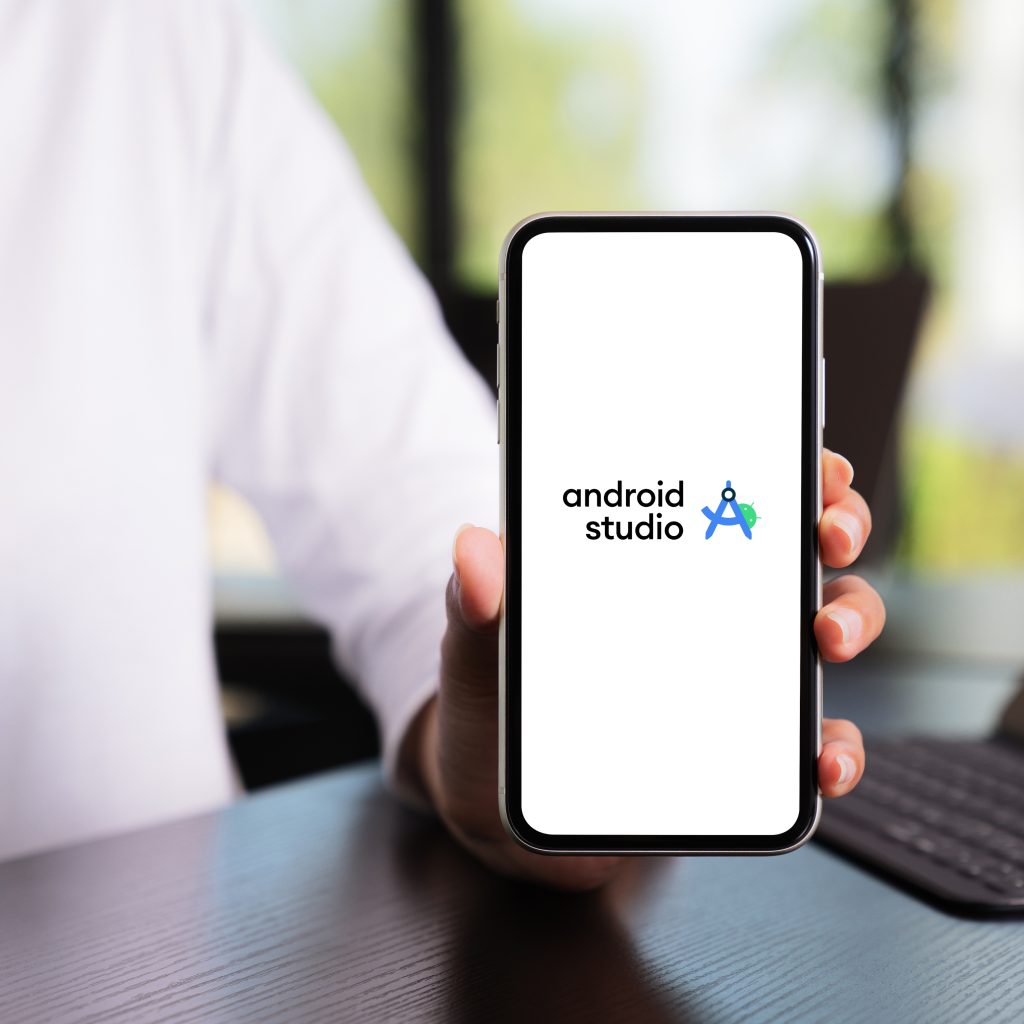Are you an aspiring mobile app developer looking for the right tools to enhance your development process? With the rapid growth of the mobile app industry, it’s crucial to have the right tools in your arsenal to create high-quality and efficient applications.
Mobile app development has become a highly competitive and rapidly evolving field. As a developer, it’s essential to stay updated with the latest tools and technologies to stay ahead of the game. With a plethora of options available, it can be overwhelming to choose the right tools for your development needs.
Whether you’re a beginner or an experienced developer, having the essential mobile app development tools is crucial for success. These tools not only streamline the development process but also enhance the functionality and user experience of your applications. In this article, we will explore the must-have tools that every mobile app developer should consider using.
What Is Mobile App Development?
Mobile app development is the process of creating software applications that are specifically designed to run on mobile devices such as smartphones and tablets. This involves a range of skills and expertise, including coding, design, user interface development, and understanding of mobile platforms and technologies. Mobile app development also requires a thorough understanding of the specific requirements and constraints of mobile devices, such as screen sizes, battery life, and performance limitations. This field continues to evolve rapidly as new technologies and platforms emerge, making it essential for developers to stay updated on the latest trends and methodologies. Successful mobile app development requires a combination of creativity, technical knowledge, and the ability to adapt to the ever-changing landscape of the mobile industry.

What Tools Are Used for Mobile App Development?
Native mobile app development tools are crucial for creating robust and feature-rich applications for different operating systems such as Android and iOS. Some commonly used tools include Android Studio for Android app development, Xcode for iOS app development, Flutter for cross-platform app development, React Native for building native apps using JavaScript and Xamarin for creating cross-platform native apps.
These tools simplify the app development process by providing a range of features and functions that make it easier to design, code, debug, and test mobile applications. For example, Android Studio offers a built-in emulator, code templates, and an intelligent code editor to streamline the development process for Android apps. Xcode provides a comprehensive set of tools for designing the user interface, writing code, and testing the app on different devices.
Flutter, React Native, and Xamarin are cross-platform development tools that allow developers to build applications for both Android and iOS using a single codebase. This approach saves time and effort by eliminating the need to write and maintain separate codebases for each operating system.
Overall, these native mobile app development tools play a crucial role in simplifying the app development process and enabling developers to create high-quality, feature-rich applications for a wide range of mobile devices.
Android Studio
Android Studio is a powerful and widely-used integrated development environment (IDE) for creating Android apps. With a range of features and tools, developers can easily design, build, and debug their applications in one unified platform. From its user-friendly interface to its seamless integration with the Android SDK, Android Studio provides developers with everything they need to streamline their app development process.

Overview of Android Studio
Android Studio is an open-source integrated development environment (IDE) for Android app development, supported by Google. It offers seamless integration with Google Cloud Platform and provides a built-in emulator for testing apps. The platform fully supports Kotlin as the official Android language, allowing developers to easily build high-quality apps.
Key features of Android Studio include a powerful code editor, a layout editor for creating dynamic layouts on multiple screen sizes, and a fast emulator for quick app testing. The IDE also supports various programming languages and provides a graphical user interface that is intuitive and easy to use.
With its wide range of functionalities, Android Studio is the go-to platform for developers looking to create robust and versatile Android applications. Its open-source nature, tight integration with Google’s services, and support for the Kotlin language make it a popular choice among developers in the Android app development community.
Key Features of Android Studio
Android Studio is a powerful integrated development environment (IDE) that offers several key features for developers. One of its standout features is its ability to create dynamic layouts, allowing developers to easily build user interfaces that adapt to different screen sizes and orientations. Additionally, Android Studio provides extensive customization options for building and deploying apps to different Android devices, enabling developers to tailor their builds to specific device configurations.
Another essential feature is the built-in Android device emulator, which allows developers to test their apps on a variety of virtual devices without needing to own each physical device. The visual layout editor in Android Studio simplifies the process of designing and previewing app layouts, making it easier for designers and developers to collaborate on UI/UX design.
Furthermore, Android Studio’s intelligent and fast code editor provides powerful tools such as code completion, refactoring, and debugging capabilities, which significantly improve productivity and code quality. Overall, Android Studio’s key features make it a valuable tool for building high-quality Android apps.
Benefits of Using Android Studio
Android Studio offers a multitude of benefits for developers. One of its key features is the ability to create dynamic layouts for multiple screen sizes, ensuring that your app looks and functions seamlessly across various Android devices. This is vital for providing a consistent user experience, regardless of the device being used.
Another advantage of Android Studio is its customization capabilities, allowing developers to tailor builds for specific Android devices. This ensures that the app performs optimally on different hardware configurations, providing a more personalized experience for users.
Additionally, Android Studio facilitates the testing of apps through an Android device emulator, allowing developers to identify and address any issues before deployment. This saves time and resources by streamlining the testing process.
Furthermore, the intelligent and fast code editor in Android Studio improves productivity, making it easier to write and manage code efficiently. It also offers strong support for Kotlin language, enabling developers to take advantage of its modern features and capabilities.
Cross-Platform Apps
Cross-platform apps are becoming increasingly popular as more and more people use multiple devices in their daily lives. From smartphones and tablets to laptops and smart TVs, having apps that can seamlessly work across different platforms is essential for user convenience.

Overview of Cross-Platform Development
Cross-platform development involves creating mobile apps that can run on multiple operating systems, such as iOS and Android, using a single codebase. The main advantage of cross-platform mobile apps is the ability to reach a wider user base and reduce development cost and time by only having to write code once. However, the performance and user experience may not be as seamless as native apps, and some features may be limited.
It is important to create low-cost custom apps with safe, dependable, and simple-to-maintain features to cater to a wide range of users. By utilizing cross-platform development tools like React Native, Xamarin, and Flutter, developers can efficiently build apps that meet these criteria. This approach also allows businesses to access a wider user base without the need for separate development teams for different platforms, ultimately saving time and resources.
Popular Tools For Cross-Platform Development
Popular tools for cross-platform development include Xamarin, React Native, Flutter, and Ionic. Xamarin is particularly preferred for developing native applications due to its ability to share code across multiple platforms. These tools offer efficiency and speed in development, allowing developers to write once and deploy everywhere, saving time and effort.
Xamarin, for example, allows developers to use C# and .NET to build native Android, iOS, and Windows apps with a single shared codebase. This not only speeds up the development process but also reduces the resources required for building and maintaining separate native apps for different platforms. React Native is another popular choice, known for its ability to create native-like experiences with the efficiency of a single code base. Flutter and Ionic also offer similar benefits, enabling developers to create high-quality cross-platform apps with minimal effort and maximum reusability.
Overall, these tools for cross-platform development empower developers to build robust applications for multiple platforms while streamlining the development process and reducing the time to market. Their ability to write once and deploy everywhere makes them a popular choice among developers looking to efficiently create native applications.
Benefits of Cross-Platform Apps
Cross-platform apps offer numerous benefits, including cost-effectiveness, reusability, and wider user base access. By using a single codebase for multiple platforms, businesses can significantly reduce development costs and time-to-market, making cross-platform apps a more cost-effective option. Additionally, the reusability of code allows developers to streamline the app development process and easily maintain and update the app across different platforms.
Moreover, cross-platform apps can reach a wider user base as they are compatible with various operating systems and devices, making them accessible to a larger audience.
Cross-platform development tools such as Flutter, React Native, and Xamarin contribute to these benefits by providing a unified framework for building apps that work seamlessly across different platforms. For example, Flutter allows developers to write a single codebase in Dart and compile it to run on both iOS and Android, while React Native and Xamarin enable code sharing across multiple platforms. These tools streamline the app development process and allow for code reusability, ultimately contributing to the cost-effectiveness and wider user base access of cross-platform apps.
Programming Languages For Mobile Application Development
When it comes to developing mobile applications, programmers have a wide array of programming languages at their disposal. Each language has its own set of features and capabilities that make it suitable for specific tasks within mobile app development. From the popular and versatile Java to the modern and dynamic Swift, programming languages for mobile application development offer a diverse range of options to cater to different needs.

Overview of Popular Programming Languages for Mobile App Development
For mobile app development, popular programming languages include Java, Swift, and Python, each with specific use cases and advantages. Java is commonly used for Android app development due to its platform independence and flexibility. Swift is the preferred language for building iOS apps, known for its speed and safety features. Python is gaining popularity for mobile app development due to its simplicity and versatility, especially for data-driven applications.
Factors that determine the choice of programming language for mobile apps include the platform (Android or iOS), the app’s complexity, performance requirements, developer expertise, and the specific features needed. Additionally, other relevant languages for mobile app development include Kotlin (for Android), C++ (for high-performance apps and games), and Dart (for Flutter, a popular framework for cross-platform app development).
Pros and Cons Of Common Programming Languages For Mobile App Development
Java
Pros
- Java is a widely used language for Android app development, so there is a large community and plenty of resources available.
- It is platform-independent, meaning the code can be written once and run on any device.
Cons
- Java can be more complex and verbose compared to other languages.
- It can be slower in performance compared to languages like Swift.
Swift
Pros
- Swift is the primary language for iOS app development, and it is known for its speed and performance.
- It is user-friendly and has a modern syntax, making it easier to learn for new developers.
Cons
- As it is specific to iOS, it limits the audience for the app to Apple device users.
- Limited resources and community support compared to other languages like Java.
Python
Pros
- Python is known for its simplicity and readability, making it easy to learn for beginners.
- It can be used for both Android and iOS app development, offering more flexibility.
Cons
- Python may not be as fast as Java or Swift in terms of performance.
- The mobile app development frameworks for Python are not as mature as those for other languages.
Ruby
Pros
- Ruby on Rails can be used for mobile app development, and it offers rapid development with its ready-to-use modules.
- It has a strong community and extensive libraries, making it easy to find support and resources.
Cons
- Ruby may not be as widely used for mobile app development as Java or Swift.
- Its performance may not be as robust as other languages.
Advanced Features for Mobile Application Developers
Mobile application development continues to evolve at a rapid pace, with developers constantly seeking out new and advanced features to enhance the functionality and user experience of their apps. From the integration of artificial intelligence and machine learning to the use of augmented reality and virtual reality, there are countless innovative technologies that can be leveraged to create cutting-edge mobile applications.
Real-Time Updates & Seamless Integration
Serverless architecture is capable of providing real time updates and seamless integration by efficiently handling events instantly and seamlessly integrating with other services. This is achieved through its ability to easily scale and adapt to changing workloads and requirements, allowing for seamless integration with various third-party services.
The benefits of serverless architecture in providing real-time updates and seamless integration include scalability and reduced maintenance. With serverless architecture, the system can automatically scale to meet increased demand, ensuring real time updates without the need for manual intervention. Additionally, the reduced maintenance of serverless architecture allows for seamless integration with other services without the need for constant monitoring and management.
Furthermore, the flexibility of serverless architecture allows for easy handling of integrations with various third-party services, enabling the system to adapt to changing requirements. This flexibility ensures that real time updates and seamless integration can be achieved without being constrained by specific technologies or services. Overall, serverless architecture offers the ability to provide real time updates and seamless integration with the scalability, flexibility, and reduced maintenance that are essential for modern applications.
Push Notifications
Push notification tools like OneSignal, Firebase Cloud Messaging (FCM), and Pusher are popular for their key features and support for multiple languages and frameworks. OneSignal offers advanced segmentation, A/B testing, and real-time analytics, and supports languages such as JavaScript, Node.js, and Java. FCM provides scalability, reliability, and low-latency delivery, and supports languages like Android, iOS, and web frameworks. Pusher offers real-time interactivity, flexible targeting, and rich notifications, and supports languages such as Javascript, Python, and Ruby.
These tools enhance user engagement by allowing personalized and real-time messaging, and support seamless integration with other platforms through APIs and SDKs. They enable businesses to send targeted notifications and drive user interactions across different devices and channels, leading to higher user retention and satisfaction.
Urban Airship stands out for its personalized messaging capabilities, allowing businesses to deliver highly relevant content based on user preferences and behavior. Pusher, on the other hand, offers real-time messaging features for instant interactions, making it ideal for mobile gaming and chat applications. Both tools support seamless integration with various platforms and offer extensive analytics for tracking user interactions and improving messaging strategies.
Data Synchronization
Data synchronization is the process of ensuring that data is consistent and up-to-date across different systems and platforms. The steps for data synchronization typically include identifying the data to be synchronized, establishing a connection between the systems, comparing and reconciling the data, and updating the systems with the latest information. Best practices for data synchronization involve using automated tools to streamline the process, establishing clear rules for data consistency, and regularly monitoring and auditing the synchronized data to identify any discrepancies.
Challenges related to data synchronization can include data conflicts, where different systems have conflicting information, as well as data loss prevention, where data is accidentally overwritten or lost during the synchronization process. To mitigate these challenges, solutions such as conflict resolution mechanisms and data backup strategies can be implemented. By following these steps and best practices, organizations can ensure that their data synchronization processes are accurate and efficient.
Analytics & Reporting
To gather data on website performance, various sources can be utilized, such as Google Analytics and social media platforms. These tools provide valuable insights into user behavior, traffic sources, and engagement metrics. Data analysis is then conducted to identify patterns, trends, and areas for improvement. Reporting tools are then used to compile this data into comprehensive reports, which can be used to assess the effectiveness of marketing campaigns, website content, and overall user experience.
Setting clear objectives and key performance indicators (KPIs) is crucial for measuring success and making strategic decisions. KPIs provide a benchmark for evaluating performance and tracking progress towards goals. By analyzing data against these KPIs, informed decisions can be made to optimize website performance, allocate resources effectively, and improve overall digital strategy.
Mobile Security & Encryption
The best tools for mobile security and encryption are Appdome, Lookout, and Trend Micro Mobile Security. These tools are crucial for protecting mobile applications from potential cyber threats by implementing advanced encryption and security measures.
Implementing robust security measures is essential to safeguard users’ sensitive data and ensure secure transactions. With the increasing use of mobile applications for various transactions, there is a greater risk of cyber threats compromising sensitive data. By employing encryption and other security tools, mobile apps can effectively protect user information, preventing unauthorized access and potential breaches.
In today’s digital age, where mobile devices are highly susceptible to cyber attacks, it is imperative to prioritize mobile security. App developers and businesses need to prioritize the implementation of strong security measures to build trust with their users and provide a secure environment for transactions. Cyber threats are constantly evolving, making it crucial to stay ahead with robust mobile security and encryption measures. Prioritizing mobile security and encryption not only protects users’ sensitive data but also ensures secure transactions, ultimately fostering a secure and trustworthy mobile environment.

Conclusion
In conclusion, app developers should utilize both the right tools and best practices to ensure effective data synchronization, analytics and reporting, as well as mobile security and encryption. By using automated tools to streamline the process, establishing clear KPIs for success, and implementing robust security measures, organizations can ensure their mobile applications are secure and efficient. With the right approach, app development teams can create reliable solutions that protect users’ sensitive data and foster a trustworthy mobile environment.
